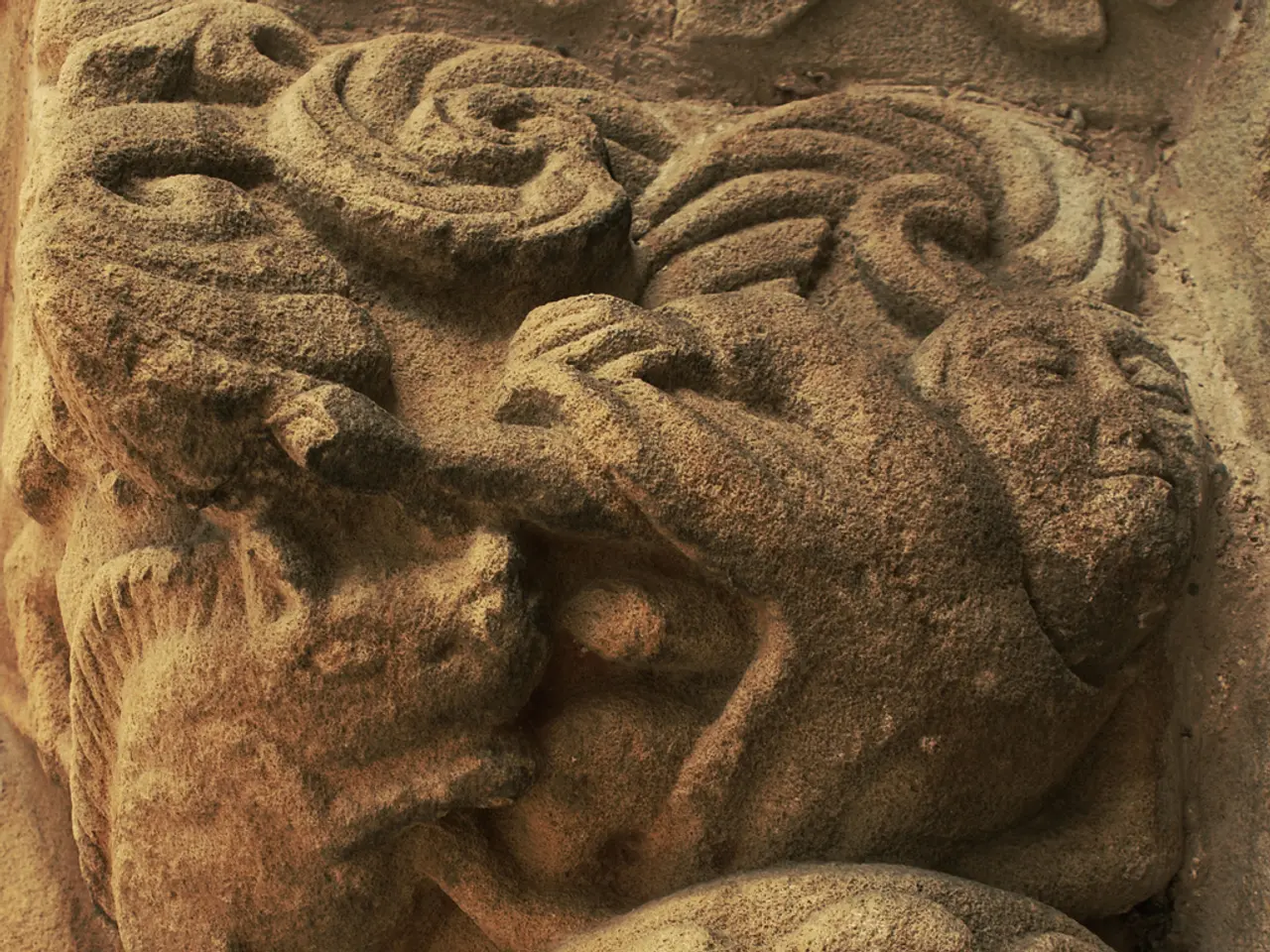Ancient Stone Structures in Mizoram, Known as Lianpui Menhirs, Elevated to National Significance by the Archaeological Survey of India - Key Details Unveiled
In the lush green landscapes of Mizoram, India, stands a remarkable collection of ancient carved memorial stones known as the Lianpui Menhirs. These towering structures, locally known as "Lungphun" or "Lungphun Ropui," which translates to 'noble stone arrays,' have been officially declared a Monument of National Importance by the Archaeological Survey of India (ASI) in July 2025.
The Lianpui Menhirs, located in the village of Lianpui and the Champhai district near Mizoram’s border with Myanmar, are a testament to the pre-Christian visual and spiritual culture of the Mizo people. The menhirs, an extensive arrangement of vertical stone slabs, are adorned with intricate carvings of human figures, animals, birds, mithun heads, gongs, lizards, and other culturally significant motifs.
Historically, these menhirs served as commemorative stelae, honoring community leaders and significant deeds. They were built in remembrance of individuals who made significant contributions to their clans or communities, such as achievements in hunting, warfare, or acts of charity. The stones were arranged in eight intentional linear alignments, oriented north-south and east-west, suggesting a ritualistic or ceremonial design.
The Lianpui Menhirs are part of a larger but less documented megalithic tradition across northeast India, with evidence of similar sites in Lunglei, Aizawl, and Serchhip districts. The site's historical context is a vital record of Mizo heritage before major cultural shifts brought by Christianity. The preservation and recent ASI recognition highlight growing efforts to acknowledge the archaeological richness and distinct history of Mizoram and the broader northeastern frontier of India, which had been overlooked in mainstream heritage discourse.
The ASI will be in charge of the Lianpui Menhirs' protection, documentation, and any potential excavation activities. The classification of the Lianpui Menhirs as a Monument of National Importance creates opportunities for federal and state financing for community involvement and preservation. Archaeological surveys may be conducted to determine the chronology of the stones and their broader historical context, potentially including scientific carbon or lichenometric dating.
Local organizations and the Mizoram State Archaeology Department are expected to collaborate with the ASI in documenting community narratives associated with the stones. The ASI's declaration of the Lianpui Menhirs as a Monument of National Importance includes measures for their conservation, such as regular site monitoring, landscape management, and heritage signage in regional languages.
The recognition of the Lianpui Menhirs by the ASI marks a strategic cultural preservation milestone for Mizoram and northeastern India’s historical narrative. It is symbolic, timely, and strategic, marking a shift towards a more inclusive heritage conservation that takes into account the distinct and diverse histories of India’s northeastern frontier.
- The preservation and recent ASI recognition of the Lianpui Menhirs, as a Monument of National Importance, will not only enable opportunities for community involvement and preservation through federal and state financing, but also open avenues for archaeological surveys, such as scientific carbon or lichenometric dating, and the documentation of local narratives.
- As education-and-self-development efforts continue to highlight the unique history and cultural significance of Mizoram, the general-news outlets may focus on the strategic collaboration between local organizations, Mizoram State Archaeology Department, and the Archaeological Survey of India, for the protection, documentation, and conservation of the Lianpui Menhirs, symbolizing a shift towards a more inclusive heritage conservation, and also marking a triumph for sports-like achievements in archaeology.




